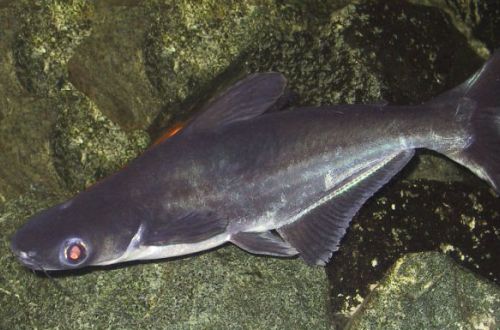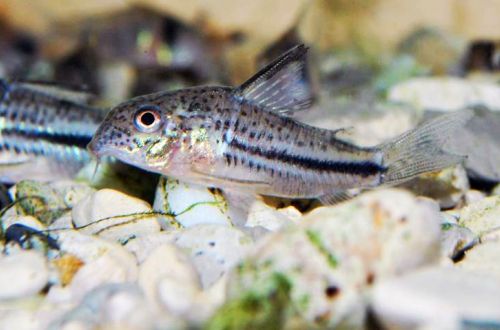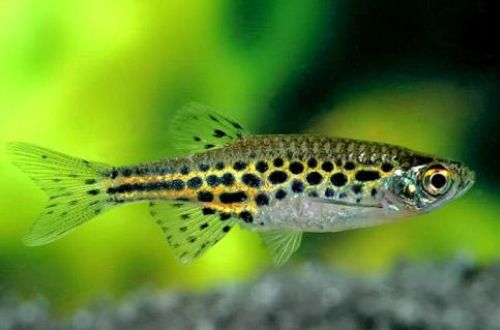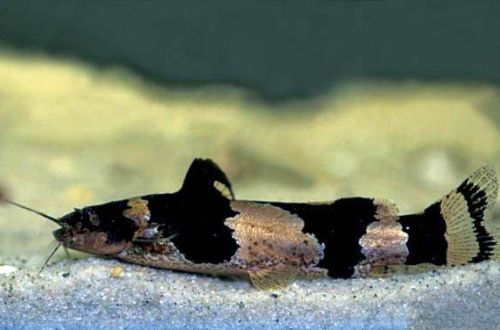
Shark som
Rainbow shark, scientific name Pangasianodon hypophthalmus, family Pangasiidae. The fish is also known as the Siamese Pangasius, Shark Catfish, Iridescent Shark, Pangasius Bigeye, and others. In its appearance, the fish really resembles a shark, which makes it attractive in the eyes of many aquarists – who doesn’t want to have their own small pet “white shark”?

Habitat
Pangasius (Pangasianodon hypophthalmus) was described in 1878, but this catfish has been known to people for many hundreds of years. In Southeast Asia, it is an important food fish. Catfish comes from the Mekong River basin, as well as the Chao Phraya River, distributed mainly in Thailand, Myanmar, Laos and Vietnam. Fish are also artificially bred in other rivers of Southeast Asia for commercial purposes. Young fish gather in flocks and are found in large numbers in the mouths of large rivers. In the wild, they feed on fish, shrimps and various crustaceans, insect larvae, fruits and other vegetation.
Shark catfish has a large retail presence, especially in Southeast Asia, countries such as Thailand or Laos, where the catfish is used as an important food source. In Thailand, it is also popular among aquarists; young individuals are presented in the European and American markets, which do not grow to their maximum size in an aquarium.
Description
An adult individual reaches a length of a meter (100 cm), but in an aquarium it may be less, in the wild it is not uncommon for catfish to exceed 130 cm, and some subspecies of Pangasius grow more than 3 meters. Catfish with its body shape resembles a sea shark, has a laterally compressed body and a large caudal fin, a short fin with one or two spikes on the back, and there are also spikes on the pectoral fins. Unlike other catfish, the fish does not have bony protective skin plates or other “armor”, from which it is easily damaged, leaving the fish prone to infections. The body coloration is silvery with two distinct dark stripes along the body, one running along the lateral line, the other below. With age, the color becomes more uniform – dark gray.
There are several color variations, in particular the albino Pangasius, and an artificially bred form of fish with a large short body can also be found on sale.
Food
Rainbow catfish is an omnivorous fish, and if possible, it can catch small fish. With age, the fish loses teeth and becomes a vegetarian. In a home aquarium, it will be a pleasure to eat all kinds of live, meat and vegetable products, as well as dry industrial food (granules, flakes, etc.). To maintain a good balance, it is necessary to give high-quality food two to three times a day, in an amount that catfish can consume within 5-10 minutes. Earthworms, brine shrimp, crickets, both live and frozen, can be a great addition to food.
Maintenance and care
Shark catfish are undemanding to the chemical composition of the water, but prefer a neutral pH, so if the aquarium is not equipped with a sufficiently efficient filter, it is recommended to replace 25% of the water in the aquarium on a weekly basis.
Due to their size, the fish require a spacious aquarium from 400 liters with space for swimming. The design should resemble the natural habitat – snags, grottoes or caves from river rocks. Constructions should not rise too high above the bottom of the aquarium, so as not to interfere with swimming, since the fish prefer the middle layers of water. Juveniles, on the contrary, require shelter, hiding under snags.
The fish is prone to jumping out of the aquarium – the presence of a cover is mandatory, in addition, due to its size, the catfish can damage the internal equipment (filter, heater, etc.), care should be taken to securely fasten them. Large fish produce a large amount of waste, so productive filters will greatly simplify the maintenance of fish, and low plants with a powerful root system will minimize the load on the biological filter.
Juveniles prefer to stay in a flock, with age the catfish become more and more isolated, but the need for a society of their own kind remains, therefore it is recommended to keep 3-4 fish in an aquarium. An important feature is that the fish has poor eyesight and, when frightened, it begins to rush around the aquarium, colliding with other fish, against the glass, the design of the aquarium. It is not uncommon for a catfish to be severely injured in a collision. Peaceful fish is compatible with other large species, but for small catfish species it is a direct danger.
Breeding / breeding
In the adult state, males and females are practically indistinguishable, only at a young age, dark stripes appear more clearly in the coloration of females. In home aquariums, breeding is not possible, the fish is a migratory species. During spawning (late spring to early summer), catfish travel long distances upstream, such conditions cannot be repeated in aquariums. Catfish are bred in large ponds in Southeast Asia, such as Thailand and Singapore, or juveniles are caught in the wild.
Diseases
Pangasius are vulnerable to many common fish diseases, in particular fungal ones. Like most catfish, in case of infection with ichthyophthyroidism, treatment is difficult due to the lack of external protection in the form of scales, therefore, when treating with drugs, their concentration should be halved. More information about diseases can be found in the section “Diseases of aquarium fish”.





